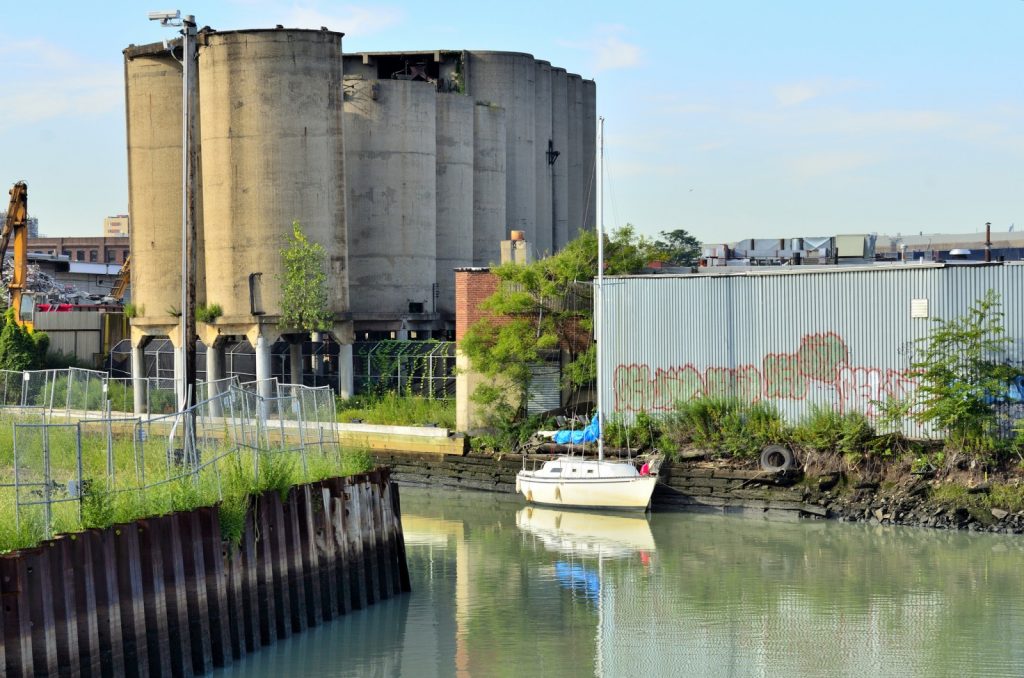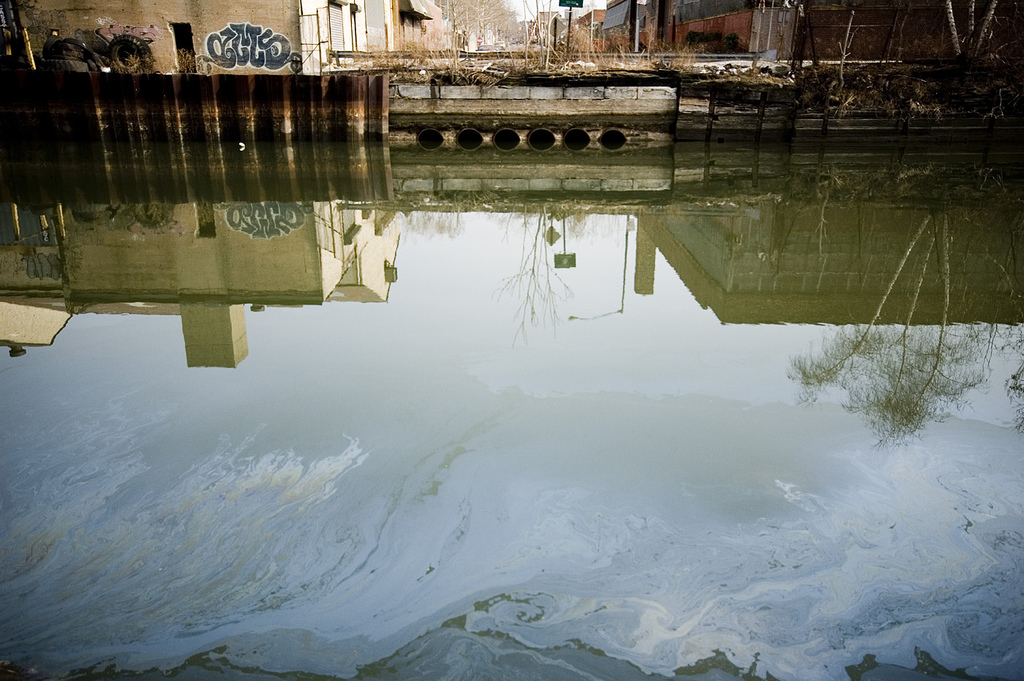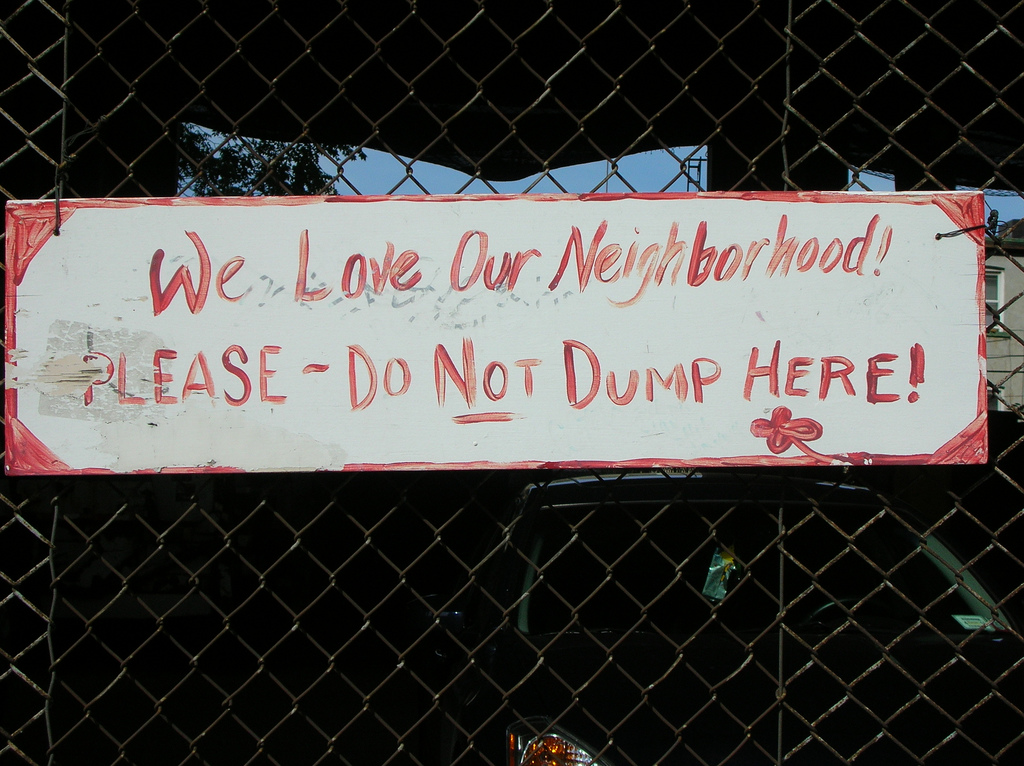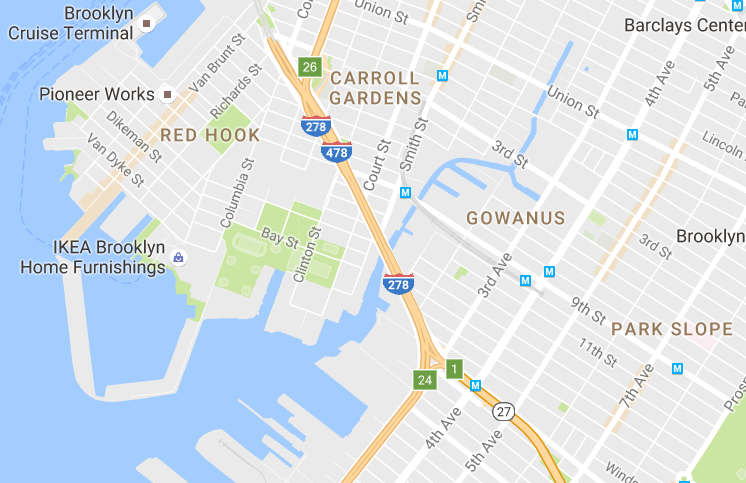It seems that every week there’s another article crowning a different neighborhood in one of the outerboroughs as The Next Big Thing. Another hip, “up-and-coming” (but often already “there”) neighborhood where millenials and young families are flocking and developers are luxurifying real estate, inevitably pricing out long-time residents.
Three years ago, Gowanus was one of the many proclaimed “up-and-coming” neighborhoods. Arguably, the straw that broke the gentrification camel’s back was the addition of a Whole Foods to the neighborhood. As The New Yorker so aptly put it, Whole Foods has a “knack for identifying neighborhoods on the cusp of gentrification,” and Gowanus was no exception. In addition to trendy bars popping up along the canal’s shoreline, there’s also the construction of Lightstone Group’s luxury rental building at 365 Bond Street, where one-bedrooms start at $3,000/month.

The August 2015 cover of The New Yorker points out the irony of the proximity of Whole Foods to the fetid canal.
So why has Gowanus only begun to gain major popularity in the last few years? Well, technically it’s having a comeback from the 1870’s, when a waterway called Mill Creek was dredged, enlarged and transformed into the Gowanus Canal. Soon after, the area was surrounded by factories and it gained traction as a residential neighborhood. The canal eventually fell out of use and residents followed suit, leaving Gowanus behind. Naturally, as costs throughout Manhattan and the outerboroughs continue to increase, New Yorkers default to less popular neighborhoods in hopes of finding reasonable prices. Consequently, Gowanus is having a comeback. So what’s become of the Gowanus Canal, the very impetus behind the neighborhood’s initial 19th century popularity? Here’s some background on the canal.

Source: Steven Pisano via Flickr Creative Commons
Where is the Gowanus Canal?
The Gowanus Canal originates at Butler Street in Brooklyn and flows down 1.8 miles, connecting with Upper New York Bay — the bay between Brooklyn, Manhattan, New Jersey and Staten Island. The 100-foot wide canal runs through several Brooklyn neighborhoods, including Park Slope, Cobble Hill, Carroll Gardens and Red Hook. See map below:
What is the purpose of the canal?
Gowanus Creek was a tidal inlet that emptied into Gowanus Bay. But in the mid-1800s, in order for the City of Brooklyn to be competitive in commerce and industry, it began converting the creek into the Gowanus Canal, so boats could access industrial inner-Brooklyn from the Atlantic. By WWI, it was the nation’s busiest canal. But, the beginning of truck distribution combined with the creation of the Brooklyn-Queens Expressway led to its decline. The canal’s flushing station broke in 1961, leading to its abandonment for the next 37 years. Now, it’s a highly contaminated, neglected waterway that some have taken to canoeing in. Oh, Brooklyn.

Source: Missy S. via Flickr Creative Commons
Just how bad is it, really?
According to environmental non-profit organization Riverkeeper, the Gowanus Canal is one of the most heavily contaminated bodies of water in the U.S. Its 150 years of use as a major industrial transportation route, in combination with the thriving industries that lined its shoreline, have led to its extreme contamination. These industries — gas plants, cement factories, paper mills, oil refineries, tanneries and chemical plants — all used the canal as their dumping grounds for waste. And, because their factories drained their sewage downhill, this also ended up in the canal.
The state of the canal has been ignored for decades, and to this day, it’s extremely contaminated with carcinogenic PCBs, heavy metals (mercury, copper, lead, arsenic), pesticides, volatile organic compounds and sewage solids. The Environmental Proection Agency (EPA) recommends people avoid “the canal water, the land around it, the air above and adjacent to it, and anything that swims or crawls in it.”

A sign in Gowanus pleads for respect of the canal. Source: postopp1 via Flickr Creative Commons
So… is someone going to clean it up, or what?
Because of its major contamination, the canal was added to the EPA’s Superfund program in 2010 — a government program designed to fund the cleanup of sites contaminated by hazardous substances. The EPA has a half billion-dollar plan to clean the canal, and if all goes accordingly, it should be complete by 2022.
The first step in the massive cleanup project began a few weeks ago, when, according to DNAInfo, EPA contractors started to remove debris with a “100,000-pound hydraulic excavator perched atop a massive barge.” The next step is to excavate sunken objects, from largest to smallest. So far, large objects have included two shipwrecks, several support pilings and a tree.
Secondly, the EPA will try to “cap” the bottom of the canal, essentially “sealing in whatever gunk has leaked down even further,” Business Insider explains. Absorbent materials like gravel, rock and clean sand will be placed atop the cap in an effort to restore the canal bottom as a habitat.
Next, a pump will be installed “on the inland side of the canal, and open up the bay side, allowing water to rush in.” Because so much of the canal’s contamination is attributed to the water’s extended period of stagnancy, the pump’s circulation of water is a key component in assuring that the canal will not regress to its current state. Lastly, planting marshland vegetation along the canal is the next step in fostering a healthy ecosystem and preventing erosion.
What does a cleaner canal mean for Gowanus’ future?
Presumably, a cleaner canal could mean more development and higher real estate costs. Newsweek put it best by explaining the incentive behind the waterway’s cleanup as “economics as much as environmentalism, with water access having become an urban amenity as coveted as basement wine cellars and climbing walls.” However, increased costs and popularity could be affected if the canal is found to be more dangerous than it’s already perceived to be. While the EPA does not consider the canal to present an “unacceptable risk,” they admit that they don’t know what long-term effects living near the canal can have on people.
Related:










